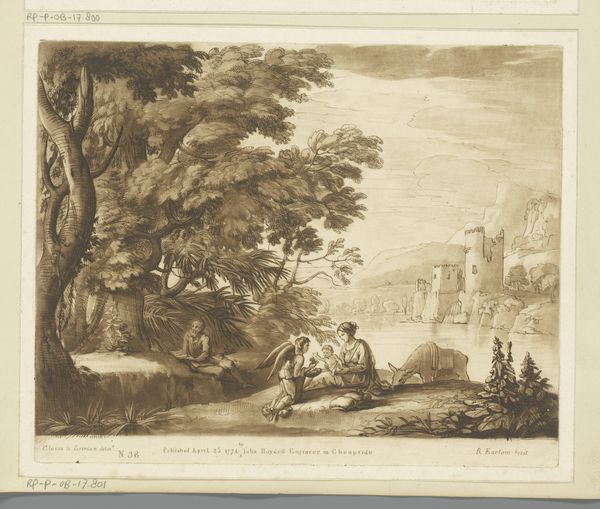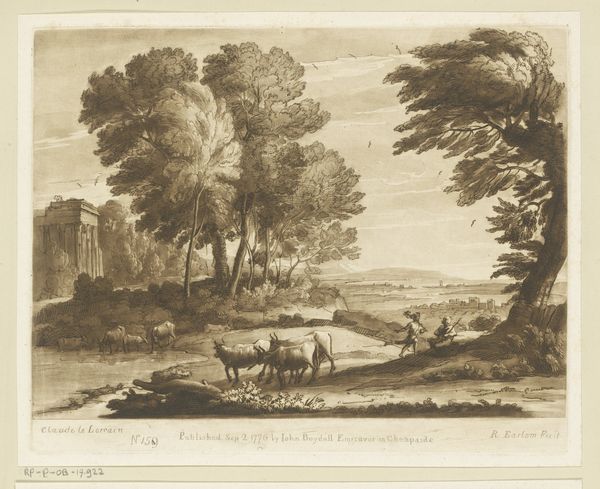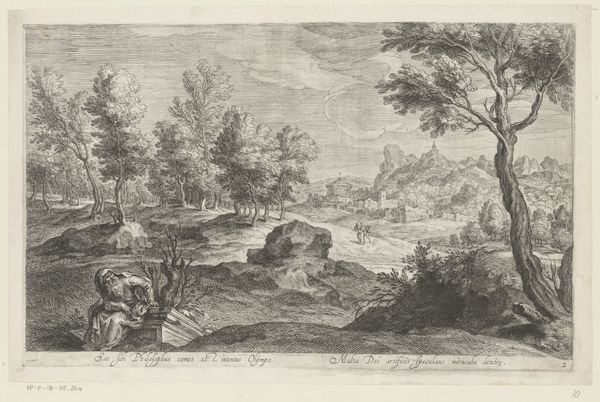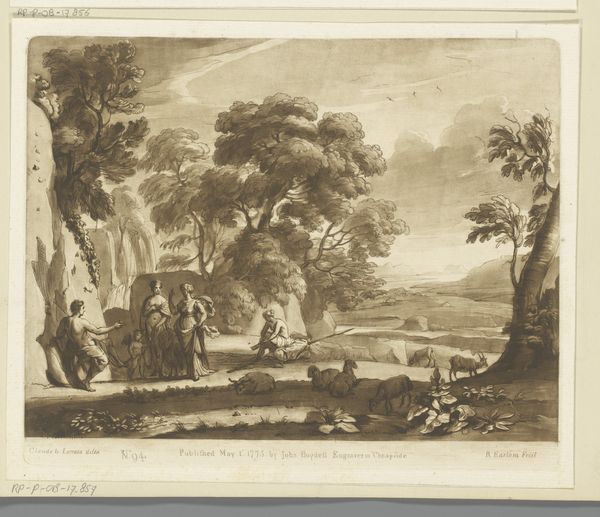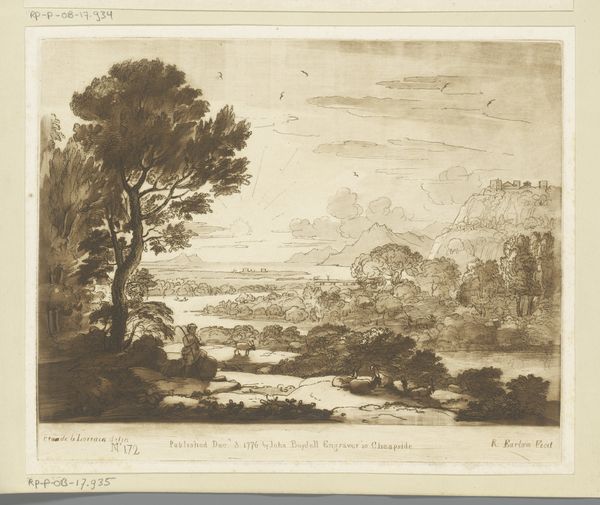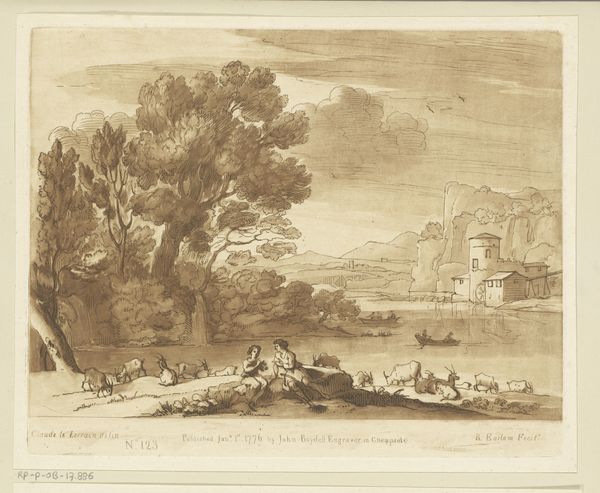
print, etching, engraving
#
neoclacissism
# print
#
etching
#
landscape
#
genre-painting
#
engraving
Dimensions: height 208 mm, width 257 mm
Copyright: Rijks Museum: Open Domain
Editor: This etching and engraving is called "Landschap met de muzen op de berg Helicon," made around 1776, possibly by Richard Earlom. It reminds me of a stage set, almost too perfect and balanced. What strikes you most about this piece? Curator: It’s fascinating to see how prints like these played a vital role in shaping the artistic taste and understanding of landscape during the late 18th century. This particular print engages with a classical theme - the muses - within an idealized landscape. We should consider its function: this isn’t simply a beautiful image, but an attempt to democratize access to art, or at least a certain kind of refined artistic experience. Editor: Democratize, how so? Curator: Well, prints like these made art accessible to a wider audience. Not everyone could afford original paintings, or travel to see grand landscapes. Prints circulated ideas, styles, and, crucially, a vision of the world rooted in classical ideals. Notice how the scene evokes a sense of order and harmony. What kind of role do you imagine a print like this might play in reinforcing existing power structures and ideas? Editor: It’s like a brand for good taste, something that elevates the owner, setting them apart. I’m not sure I considered the politics of distributing imagery. Curator: Exactly. It’s a reminder that art consumption is rarely a neutral act. Even beautiful landscapes can be tied to larger social and cultural dynamics. Editor: I’ll never look at a landscape print the same way again. Thanks for opening my eyes to the broader picture.
Comments
No comments
Be the first to comment and join the conversation on the ultimate creative platform.




